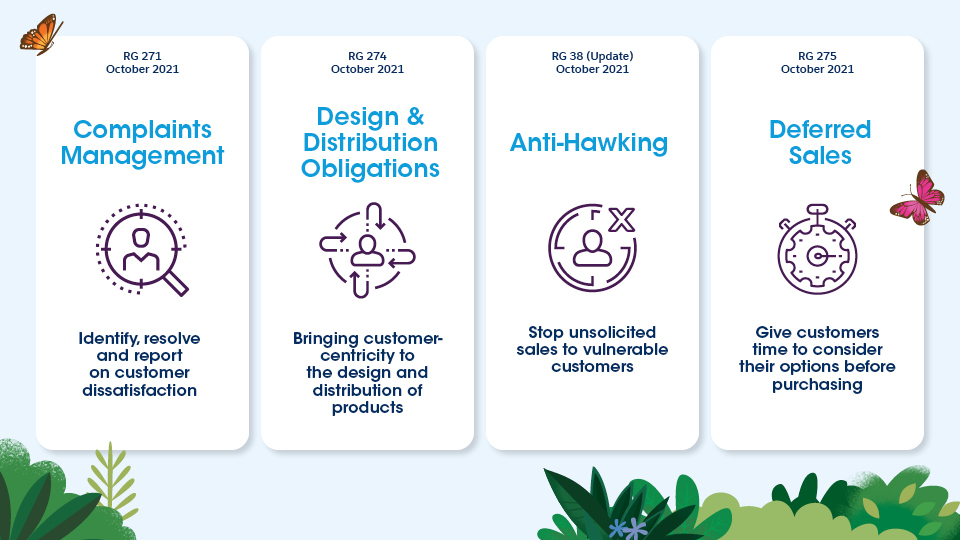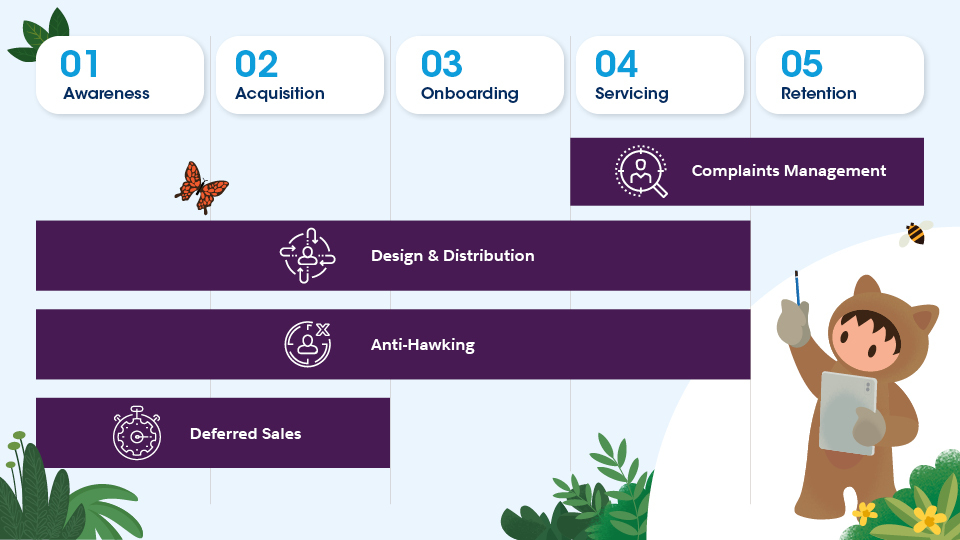The Case for Connected Compliance in Financial Services: How Fragmented Approaches Slow Down Providers


Financial services providers will always have new regulations to consider. But what’s the true cost of managing these regulations as separate requirements, or as obligations rather than opportunities? Jason Hanna, Lead Solution Engineer at Salesforce, explains what’s at stake and why providers should be thinking of compliance from a singular, end-to-end vantage point.
Salesforce Staff
The Royal Commission into financial services resulted in four regulations that require finserv organisations to put customers firmly at the centre of their operations. But, without addressing these requirements holistically, financial services providers risk creating unnecessary hurdles down the track — and it might even compromise their ability to move quickly once regulations inevitably evolve or become clearer.
Of course, it’s not just regulatory compliance that’s pushing providers toward more customer-centric practices. Especially with up-and-coming fintechs disrupting the sector, consumers increasingly expect greater convenience, transparency and personalisation. And most of them want financial services providers to use their personal data to help achieve this. Those expectations fit hand-in-glove with new requirements for finserv.
This is why providers often hear that they need to put the customer at the centre of their models and strategies — there’s both a competitive imperative and a compliance imperative.
But what does that mean on a practical level? Frequently, various pressures and habits lead to providers addressing each regulation in a silo, often through separate systems (or ‘point solutions’) that can come with short-term and long-term costs. Let’s take a look at what the regulations mean for providers and why they’re better managed centrally — what we call ‘Connected Compliance’.
Bringing the Four Regulations Together

If you’re a finserv leader, there’s a good chance you’re already well-acquainted with these regulations and what they mean for your business. But it’s worth considering why it can be helpful to consider these regulations as a whole rather than in isolation.
Firstly, each of the 4 regulations are customer centered, and therefore map clearly to a typical customer journey, in some cases even overlapping each other. It therefore makes sense to manage these regulations as part of your customer journey platform, creating a compliant-by-design environment.

Secondly, it’s easy to see how each one leverages the other in some way. If we take complaints as an example, they are necessary for capturing and reporting on potential breaches of anti-hawking. They feed into DDO to help you know if your products are reaching the intended people from the TMD, and they are used to build a case for exemption for Deferred Sales.
From the standpoint of complaints alone, we can see how each of the regulations leverage that data in some way. This interconnectedness is also apparent from the standpoint of the other regulations.
For this reason alone, it’s more efficient to manage all four regulations on a single platform — data that informs one area of compliance is likely to be relevant to another. But managing them via a single solution also creates a far better experience for customers, partners and staff, too.
For example, providers — who tend to prefer partnering with those who make it easy to do business with — can get a more complete view of each customer and are less likely to deliver clunky, conflicting experiences that typically result from fragmented data systems. Through a single portal, customers can view and manage their products and services alongside their product preferences, complaints, consents and more. And staff will perform their roles more efficiently and with less errors when interacting with a single system instead of pivoting between multiple interfaces.
More broadly, regulators’ aims are similar: after the Royal Commission, changes were enforced to protect consumers and demystify financial services at every stage of the customer journey. And their intentions are worth considering when we think about how to manage regulations.
Keeping Pace With Evolving Regulatory Requirements
Regulators want to ensure businesses are doing right by customers. As technology and business models evolve, and as newer regulations play out across a complex and varied industry, it’s common for organisations to realise they need to update their approaches.
Whether regulators are clarifying existing regulations or building new ones, protecting consumers necessarily involves updating our understanding of requirements. The bottom line? Whatever your response to existing regulations, it will eventually need to be updated — quickly.
This is another downside to managing regulations within point solutions. Rather than making adjustments across a single system, providers will need to separately address each solution every time a regulation is clarified or added. Since these requirements are often time-sensitive to begin with, fragmented solutions risk eating through lots of time and resources when providers can least afford it.
Understanding Hurdles to Connected Compliance
Addressing each regulation in separate systems tends to be far less efficient, but there tend to be very real pressures and obstacles that nudge decision-makers in this direction.
New regulations often come with tight timeframes from the regulator, meaning businesses often see the creation of a point solution as the simplest way to quickly meet a new requirement. Further, each regulation tends to be owned by a separate team, leading to siloed approaches that don’t consider broader impacts across the customer journey.
Lastly, while it’s an understandable mindset when schedules are busy and demands are plenty, it’s common for providers to see regulations as little more than an obligation — rather than an opportunity. But often these regulations are closely aligned with customer expectations and are now the building blocks of sustainable, long-term customer relationships.
While many of these pressures can act as hurdles to more efficient regulation management, they also double as additional reasons for pursuing Connected Compliance. After all, if your organisation has the technical foundations to respond in more agile ways, there’s less incentive to go with a quick yet problematic fix. And a single system can ensure teams aren’t doubling up or working against one another while trying to manage a regulation.
Moving Toward a Unified Solution
The costs of a fragmented approach are many, including competitive advantages and the kind of customer experiences that build trust.
But, perhaps even more concerningly, they can often undermine the very efforts that lead providers to them in the first place — that is, being able to quickly ensure compliance while minimising costs. Rather than a quick fix for compliance, many point solutions can actually increase your risk of running afoul of a regulator.
For instance, separate systems mean that data tends to sit in siloes, which can become a big problem for requirements like DDO or anti-hawking. If you have separate management systems and multiple sources of truth, it can be easy for customer information to vary wildly. At that point, it can become difficult to know what data to rely on. Further, the need for these regulations to be integrated introduces operational cost and risk for those that take a point-solution approach. This is all much clearer when you’re using one platform for the end-to-end process.
While a Connected Compliance approach might mean frontloading some of your work, as opposed to quickly adding a bolt-on solution, it will set up providers for more agile, comprehensive responses to both existing and future regulations — all while reducing costs, reducing risks, and improving the customer, staff, and partner experience.
And that’s simply better for customers, and every organisation who wants to do right by them.
Ready to take control of regulatory risk? Learn more and see solution demos.
Want trailblazer tips and thought leadership straight to your inbox?



















